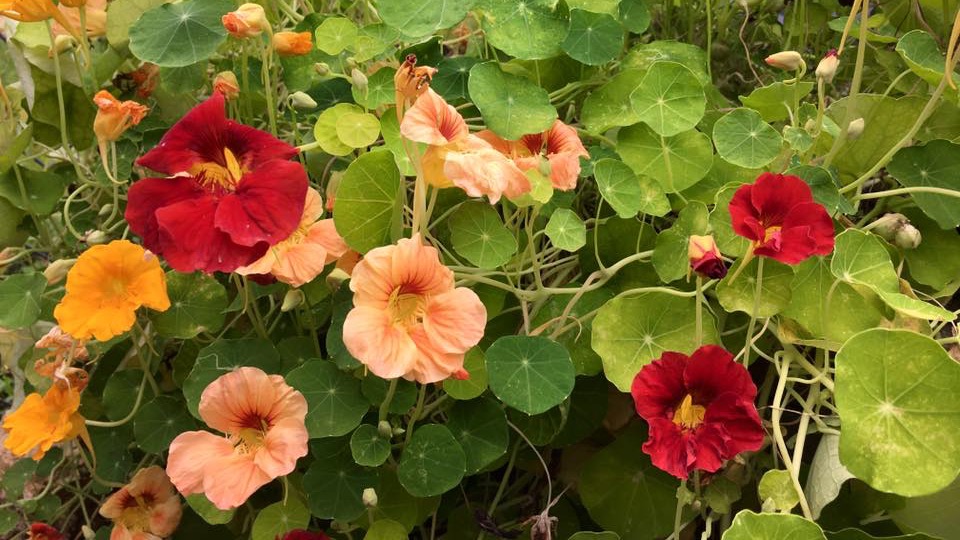
I am a firm believer that just because you can eat something, does not necessarily mean that you should…
But I am also someone who will try anything twice!
So, upon learning that some flowers in our garden were edible we had to give them a try. We started with what we had, and we experimented, and since then have found some new staples for the garden.
We honestly very rarely eat them. Some flowers are just too pretty to pick! But every now and then, it is fun to brighten up your plate with a bloom or two!
Squash Blossoms

Made into a vessel for goat cheese, then batterered and deep fried, what wouldn’t be good?
You don’t have to stuff them; lots of recipes out there call for simply dredging, frying, and serving with a dash of sea salt. But when given the option of with goat cheese or without? We will always pick goat cheese! If you are not a fan of goat cheese, ricotta works great too for a milder tasting snack.
We could eat a dozen of these straight from the fryer. Let’s be real, we could eat two dozen! But if you want to stretch them into a meal, throw a few on top of a salad. Much like adding grilled chicken or steak to a salad, the inclusion makes it feel more like a meal.
If you’re concerned that the instant gratification of deep fried goat cheese nuggets of deliciousness will cost you in the long run production of your plant, fear not! Squash plants have both male and female flowers. Only the female flowers will bear fruit, so you can pick most of the males on the plant without disrupting your future harvest.
It is fairly simple to tell the male and female flowers apart. The male flowers will be showy and strut their stuff to attract pollinators. The female flowers will generally be lower and closer to the plant. Remember their stalks will eventually carry the weight of the squash fruit itself. You will also notice a female flower will have a tiny squash shaped baby bump at its base. If you’re unsure, just go for it! Really, what’s to lose? Squash plants are prolific producers; there will be more blossoms.
It’s important to note that “squash” in this instance refers to anything in the cucurbita (or gourd) genus, such as yellow squash, crookneck squash, zucchini, even pumpkins! Also worth mentioning – the flowers are easiest to work with just before they open. They seem to hold up better to stuffing.
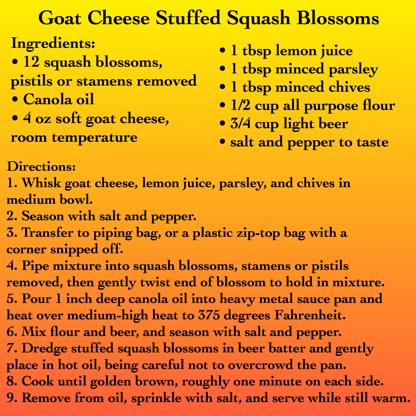
Pansies and Violas
Pansies have a special spot in our heart because they last so long into the cooler months. They are a delight to behold when the rest of the landscape has turned to varying shades of brown and grey.

Not technically perennials, and not a fan of harsh temperatures, pansies and their cousins violas will go dormant in extreme temperatures or even eventually die off altogether. That said, we have a few faithful clumps that come back year after year. Whether they are surviving in dormancy or reseeding we are not entirely sure, but every year they pop back up! We are in a zone 7, so this might differ where you live, but I encourage you to give them a try.
As with any edible flower, you will want to make sure the seeds or plants that you puchase have been raised free of pesticides. Unlike many edible flowers, with pansies and violas you can eat the whole flower, including the pistil or stamen. The petals alone have a mild fresh almost grassy flavor while the entire flavor can taste a bit like wintergreen depending on the variety. Play around and see what you like.
When it comes to pansies though, for us, vanity rules. We are not eating them for the flavor, but for the cheer they bring to the plate in the cooler months when we are yearning for some color. Throw a few blooms on top of a salad. Or as a garnish for soup. Or get fancy with your baked goods! What a fun way to brighten up a simple sugar cookie – just press onto the cookie and sprinkle with a little sugar before baking to really make it shine.
Pansies make a welcome addition to mixed drinks as well. Try this champagne cocktail created by master bartender Kenta Goto and let us know what you think in the comments below.
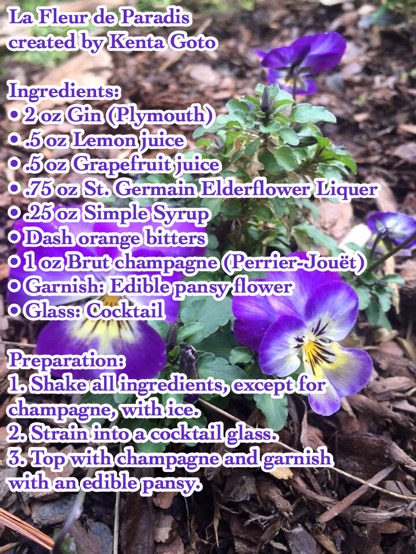
Nasturtiums
Our new favorite flower. How did it take us so long to discover the delight of growing nasturtiums?
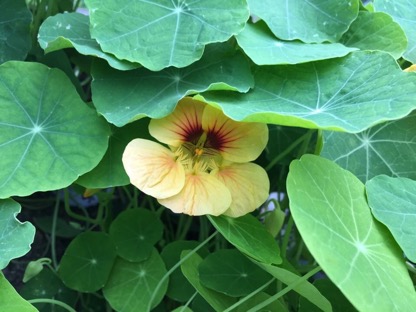
Nasturtiums are annuals but are quick to reseed. They bloom from late spring to early fall and can grow in most soil types. Easy, right? The leaves and flowers are also high in Vitamin C and are natural antibiotics and the flowers have been found to contain anthocyans which help counter the negative effect of free radicals.
If this wasn’t enough, they are drop dead gorgeous! Playful round leaves form a thick cascading mound. The flowers, intricate and ornate in varying shades of red, orange, and yellow, positively shine in the sun. Simply put, we fell hard for nasturtiums.
Usually we like to simply sprinkle a few leaves and blooms on our salad, but prepping for this project inspired some experimentation. This is a variation of a recipe found in The Herbfarm Cookbook with the main difference being the addition of a nasturtium vinaigrette in place of the tarragon wine vinegar. Because, why not?
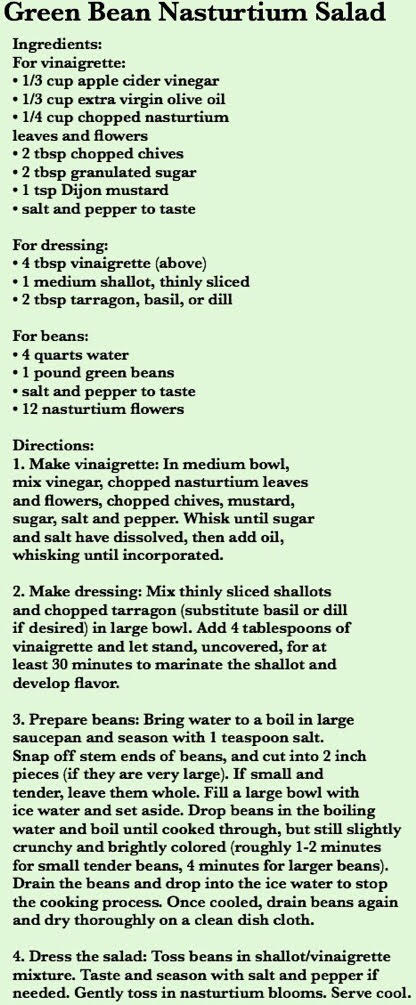
Leave a few flowers whole to garnish the plate and really make it pop. Expect a peppery flavor from both the leaves and the flowers. I actually like the taste of the flowers a little more than the leaves, so don’t be shy!
You can even pickle the seed pods for a convincing caper stand in, earning them the nickname “poor man’s capers”. If anyone has tried this, please tell us about it in the comments! We are looking forward to trying out a recipe we found in The River Cottage Preserves Handbook. It calls for 3-1/2 ounces of seed pods to make two 4-ounce jars, so I think we will have enough to try it out. Please send any tips our way!
Honorable Mentions
Culinary Herbs
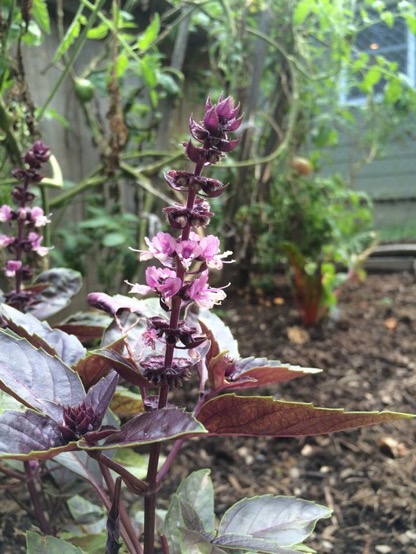
You can use the flowers of culinary herbs such as basil, thyme, and cilantro in the same way you use the leaves. It makes a fun edible garnish to put a sprig of cilantro flowers on top of your guacamole, for example! There is another benefit to allowing your herbs to go to flower. We have two cilantro plants in pots on our porch that have reseeded themselves for years. Some may call it lazy, we prefer low maintenance.
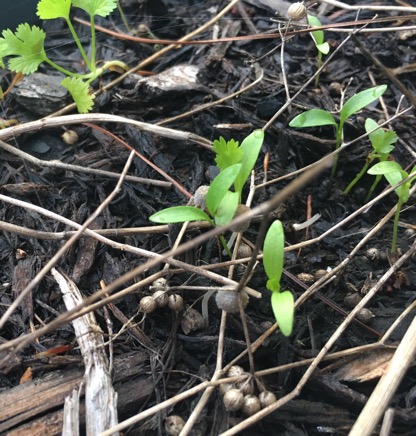
Marigolds
This had to make the list from shock alone. Marigolds have a very distinct smell. Upon hearing that they were edible, all I could imagine was the taste of how they smell, and it did not sound greatly appealing. Marigolds are prolific growers and reseeders, so we never have a shortage in our garden. (Remember, low maintenance!)

So I went straight out and popped a few petals in my mouth. Thankfully, they do NOT taste like they smell. They have been described as having a citrus flavor. I wasn’t greatly impressed or turned off by the taste, but I’m not above sprinkling a few petals over any dish that could use some color and is enhanced by a citrus note.
Day Lilies
We have not tried them yet, but our neighborhood deer sure do love them!
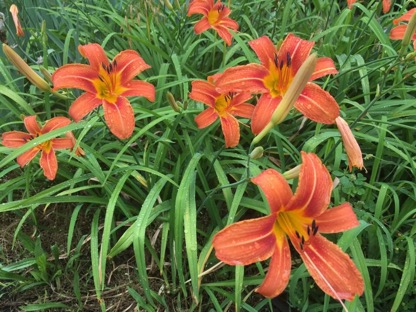
Make sure to research your specific variety, because not all lilies are edible. The unopened buds, when sautéed simply with butter and salt, are said to have a mildly sweet vegetable flavor. I will be sure to let you know! If I can beat the deer to them this year…
Have you tried any of these flowers? Tell us about your favorite edible flowers in the comments below!

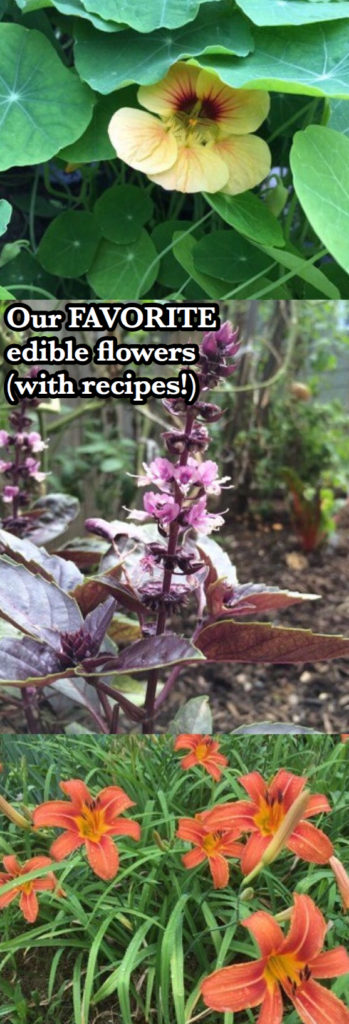
Great article ! My taste buds are on alert ! PS, keep up the great work !
Thanks Jackie!
Those goat cheese squash blossoms sound RIDICULOUS. I’m drooling over here! Interesting article!
Oh they are pure ridiculousness! Thanks Kristin!